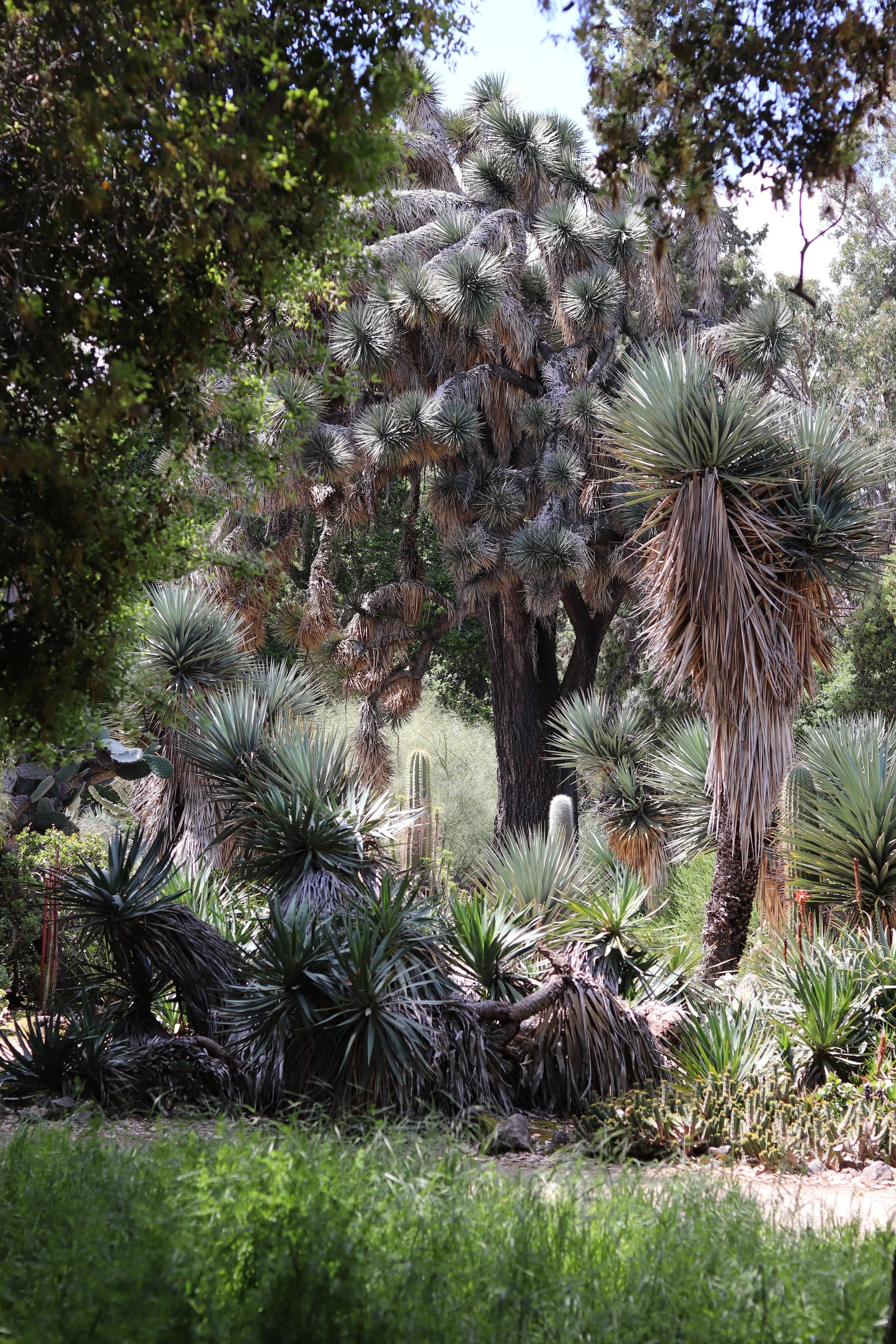Cactus Garden
Tucked within a flourishing Northern California arboretum, this garden is a retreat, dense with cacti, succulents and herbaceous plants. In the late afternoon, eucalyptus swag filters light into a dapple and palm fronds offer full shade.
Many imported trees — yucca, broadleaf evergreen, eucalyptus, oak, and palm — form a cove-like surround. Situated in the garden’s center are dense plantings of golden barrel cactus, prickly pear cactus, and flat-flowered aloe. April brings a preview to the peak flowering season of May, when brights contrast an otherwise muted palate and swords of agave illuminate confidently in the hot sun.
The garden was designed by landscape architect Rudolph Ulrich for the Stanford family, when cacti and succulents were grown in greenhouses of the wealthy and rarely cultivated outdoors in ground soil, save for their native environment. Skilled at naturalistic landscapes, Ulrich’s work — also seen at Hotel Del Monte in Monterey and Hotel Raymond in Pasadena — marries the formality of symmetrical plantings with the informality of desert varietals. In the southeast corner of the garden, two yucca filifera of the original planting still stand.
THE HISTORY
While Leland Stanford seemed to treasure the native oaks that grew in abundance on the property, he was particularly interested in growing exotic trees from the United States and other parts of the world. He ordered specimens from England and the European continent, Turkey, Africa, the East and West Indies, Mexico, South America, China and Japan. Fast-growing eucalypti were planted in large numbers to provide shelter for the more valuable plants, not yet acclimated.
The Arizona Garden was laid out adjacent to Leland and Jane Stanford’s proposed new residence, before an 1883 map of the Palo Alto Farm was drawn. Entries in the 1894 records indicate that Ulrich was traveling back and forth between Monterey and the Stanford estate. Ulrich’s design style had special resonance for the Stanfords, who, inspired by the many gardens they had viewed on their extensive European travels, preferred formal landscape design.
— Julie Cain, in Sandstone and Tile












